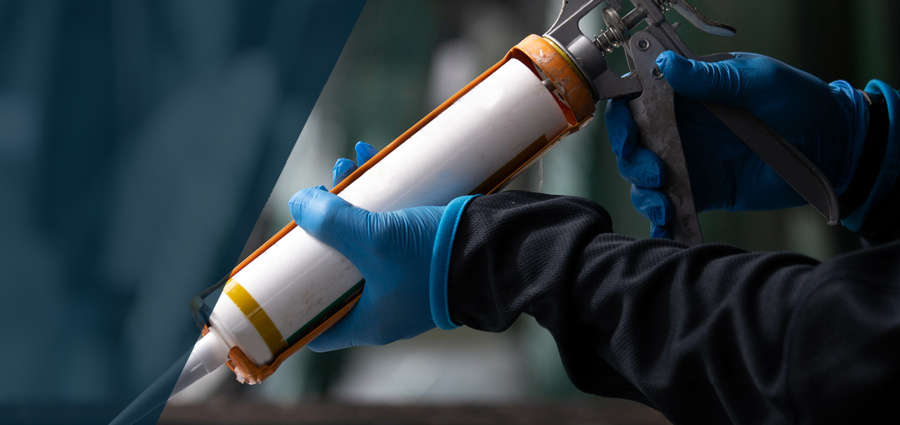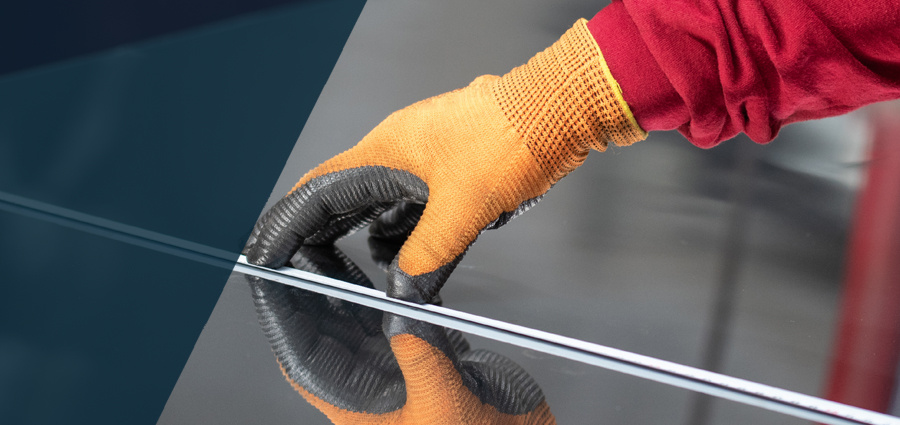Safety – Essential Safety Products for the Workplace
.jpg?width=1000&height=500&name=main-banner%20(1).jpg)
Safety in the workplace starts with a commitment from everyone involved. Management and employees share the responsibility to maintain a safe working environment. Along with this commitment to planning, training, and practice, the right safety equipment is essential.
6 Essentials for Employee Safety
- Chemical Protection: Chemical-resistant gloves, aprons, and coveralls
- Eye & Face Protection: Safety glasses, face shields, and goggles
- Safety Clothing: High visibility vests and jackets, reusable and disposable paint suits
- Welding Safety: Welding gloves, sleeves, and jackets
- Hand & Arm Protection: Cut-resistant sleeves and cut-resistant and disposable gloves
- Hearing Protection: Earplugs and earmuffs
Of course, the necessity of many of these products will depend on your specific environment. Safety is not an area where businesses can afford to lose focus or cut corners, especially for manufacturers.
Whenever you’re choosing safety gear, there are many considerations. Just a few of those include:
- Material Compatibility—Ensure that the gear you’re purchasing will provide adequate protection from the materials you are working with.
- Size and Fit—Protective gear should fit properly, allow efficient movement, and be reasonably comfortable. Ill-fitting gear may not provide adequate protection and may even be more dangerous to the wearer.
- Working Environment—Safety gear should be well-suited to the temperature and humidity it is being worn.
- Regulatory Compliance – Ensure the gear meets all the required safety standards.
Continue reading to learn more about each of these safety product categories.
1. Chemical Protection

Chemical protection is important in manufacturing settings that use adhesives, sealants, paints, or cleaners in their processes.
Material compatibility is one of the most crucial factors when selecting safety gear to protect from chemicals.
- Chemical Resistant Gloves: Ensure that the gloves you select are designed for the chemicals you work with and suitable for the employees who will be wearing them (for example, Latex is a material commonly used to manufacture safety gloves; however, many people are allergic to Latex). Additionally, consider whether the gloves are thick enough to provide ample protection but thin enough to allow necessary dexterity.
- Chemical Resistant Aprons: The same considerations should be taken for aprons as gloves. In addition, consider how easily they can be put on and removed.
- Chemical-resistant coveralls: From the material compatibility and fit standpoint, coveralls are like aprons and gloves but designed to provide full-body protection. However, they require more time and effort to put on and remove. To minimize contamination risk, coveralls should be easy to take off without assistance. Additionally, ease of removal may be critical in emergency situations.
2. Eye & Face Protection

Workers who are exposed to the potential of flying debris, harmful chemicals, and intense light require eye and face protection. Those industries include manufacturing, construction, vehicle repair, welding, and more. More specifically, OSHA requires employers to ensure their employees are using appropriate eye and face protection when exposed to flying particles, molten metal, liquid chemicals, acids or caustic liquids, chemical gases or vapors, or potentially injurious light radiation.
Your decisions on eye and face protection require an evaluation of the specific hazards faced by your employees based on the tasks being performed as well as the environment.
- Safety Glasses: Glasses offer essential protection from debris and minor impacts. There are many options available, including glasses with wrap-around lenses, side shields, different lens colors for specific purposes depending on your task, and so much more.
- Goggles: Goggles take eye protection to the next level, providing a more complete seal around the eyes than safety glasses and offering better protection against dust, chemicals, etc. They’re essential for individuals who wear prescription eyeglasses since they can be fitted over them.
- Face Shields: Offer complete face protection and are often used in conjunction with safety glasses or goggles.
3. Safety Clothing

The types of available safety clothing run an extensive gamut. As mentioned, what you might need will depend on the dangers inherent to your business and manufacturing processes. Construction workers, roadside workers, first responders such as police, firefighters, and EMTs, security and safety personnel, maritime workers, and disaster and environmental cleanup workers all require some form of safety clothing.
- High-Visibility Clothing: Vests, jackets, and pants come in bright colors and with reflective strips to increase the visibility of those working in vehicle traffic areas, construction environments, and low-light conditions.
- Reusable or Disposable Suits: Reusable suits are typically purchased when tasks are repetitive and long-term. They are more durable and can be fit for optimal comfort. Disposable suits are often the choice for hazardous conditions and where contamination control is critical.
4. Welding Safety

Welding dates back to ancient times and is still used extensively across many industries, including manufacturing, construction, rail transport, electric power, electronics, medical devices, oil and gas, repair and maintenance, sheet metal fabrication, and more.
Welding involves various potential hazards, and the correct use of appropriate PPE is just one of the many requirements for keeping welders safe.
- Welding Gloves: There are three primary types of welding gloves. MIG (metal insert gas), TIG (Tungsten insert gas), and SMAW (shielded metal arc or “stick” welding). They can be manufactured from materials such as cowhide, goatskin, deerskin, pigskin, or elk skin. Finding the gloves that offer the best combination of protection, dexterity, and comfort for the welder is critical to both performance and safety.
- Welding Sleeves: Welding sleeves can be made of various materials like gloves. Sleeves are typically manufactured from leather, Kevlar, carbon fiber, and aluminized fabric. As with gloves, the type of welding and the specific hazards are essential to proper selection.
- Welding Jackets: Selection factors include material and construction, protection level, fit and comfort, durability, ventilation, and compliance. Regular maintenance and inspection are needed to ensure welding jackets are in proper condition to provide adequate protection.
5. Hand & Arm Safety

Cut-resistant products are extensively used in industrial, manufacturing, and construction markets. Preventing injuries to employees’ hands and arms is vital; however, selecting appropriate apparel also needs to consider dexterity and productivity. Heavy gloves might provide optimal protection but not allow the employee the required mobility to complete their tasks efficiently.
- Cut-resistant Gloves: As mentioned, careful evaluation of the required protection level is paramount. Choosing gloves that are ANSI 105 and EN 388 compliant (tested for abrasion resistance, cut resistance, and puncture resistance) is critical. Cut-resistant gloves can be manufactured from various materials in different thicknesses. Trial and error and feedback from workers tasked with different responsibilities are often the best ways to ultimately select the best gloves for the job.
- Disposable Gloves: Disposable gloves are critical in many manufacturing environments. Appropriate use of disposable gloves in manufacturing can improve worker safety, product quality, and operational efficiency. They can protect workers from exposure to different chemicals while maintaining product quality, ensuring workplace hygiene, and complying with safety regulations.
- Cut-resistant sleeves: From metalwork and machining to woodworking and carpentry, cut-resistant sleeves are essential to worker safety wherever the risk of cuts and punctures is high. When wearing safety sleeves, workers can confidently perform tasks efficiently and effectively while minimizing the risk of injury.
6. Hearing Protection

Exposure to loud noise, particularly for prolonged periods, can lead to noise-induced hearing loss. This is a considerable health concern for manufacturing, construction, and airport workers. The impact on workers can be as serious as permanent hearing loss or tinnitus, making hearing protection of the utmost importance.
A product's Noise Reduction Rating measures the effectiveness of a hearing protector to decrease exposure to sounds (higher ratings equal stronger protection).
- Ear Plugs: Made of silicone or other soft materials and inserted into the ear canal, these plugs, which come in a variety of shapes and styles and can be reusable or disposable, effectively reduce noise exposure when properly fitted. They are typically considered more convenient than earmuffs but offer a lower noise reduction rating.
- Earmuffs: Designed to fit over the head with cushioned ear cups that create a seal around the ear. While less comfortable to wear than earplugs for extended periods, earmuffs typically offer more substantial noise reduction, especially in high-noise environments.
Note: It’s important to select a product with an NRR level appropriate for the work environment. Protective gear with an NRR rating higher than necessary can create communication problems or prevent the wearer from hearing warning signals. It may also create a feeling of isolation, causing the user to remove the hearing protector altogether.
Keeping employees safe from workplace hazards is one of the most important jobs of any employer. Personal protective equipment (PPE) is critical to that goal, especially in manufacturing. Providing essential PPE to employees demonstrates an employer’s commitment to prioritizing their workers' health, safety, and welfare. It not only creates a safe environment but ultimately a more productive one as well.
Our Paint Shop Catalog contains many of the Safety products described here, plus a full line of other MRO consumables.
If you use these products regularly, Austin Hardware can work with you on a Vendor-Managed Inventory program to ensure you’ve always got the necessary protective gear in stock. VMI programs are a great way not only to ensure you always have stock but to take on a partner who will relieve you of the burden of many replenishment tasks off your hands.
Please contact your Austin Hardware sales representative or your nearest Austin Hardware location for more information on how we can help you.
For more information on personal protection equipment requirements, see OSHA's standards.
Looking for more information on Austin Hardware's products and services?
Fill out our form and an Austin Hardware® solutions consultant will contact you!
"Since my company entered into a vendor managed inventory program with Austin, our service levels and in-stock position on our parts have never been better. We consolidated 23 suppliers down to one, Austin.
Now we only have one invoice to review, one shipment to check in and we are in stock 99% of the time! Austin has one of the best customer service teams we work with, I would recommend this program to anyone who needs to take control of their inventory and be sure to have the parts you need on the shelves!"

Gary from Ohio
"I wanted to send along some great news. We have experienced a few problems with shipping over the years, but the solutions that you put in place over the last few weeks have been very positive. On another note, Tom and Emma, the Vendor Managed Inventory team that I have been working with, have done a great job responding to concerns and questions in a timely fashion. That fact is another reason our VMI program is successful and getting stronger every day. Our overall numbers continue to increase and we are looking forward to the growth in 2017."

Shawn from Texas
